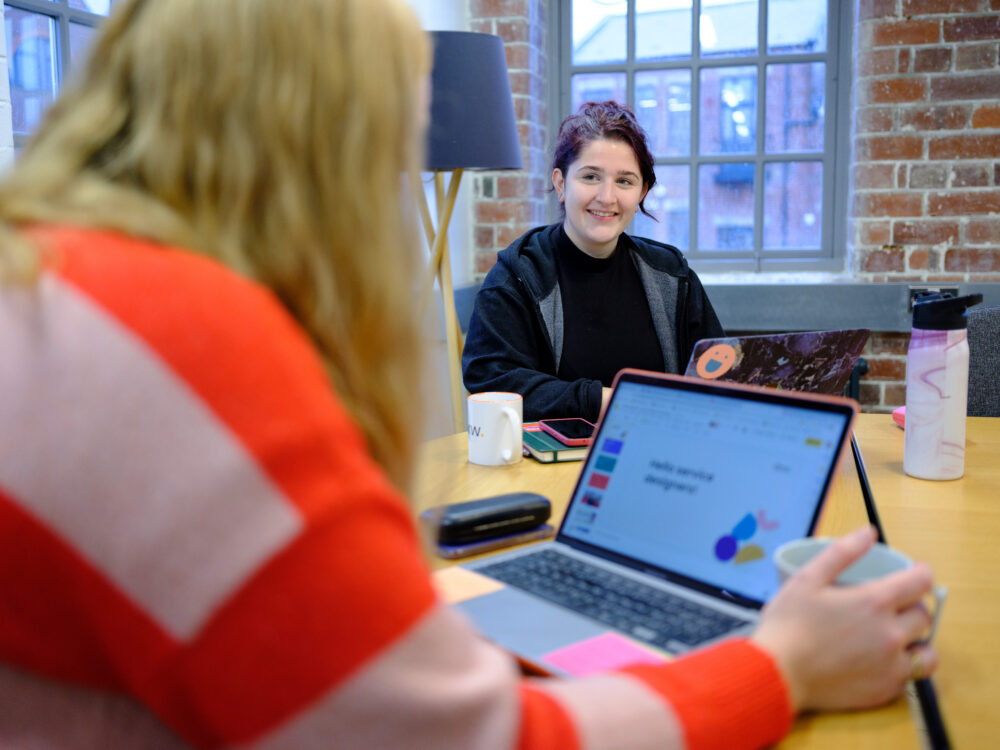
We’ve seen people’s response to the service and its new features in real time. It’s already having an impact
We worked with Mind to launch their new online community Side by Side. Side by Side is a safe space where people experiencing problems with their mental health can ‘listen, share and be heard’
In Mind’s own words, Side by Side is:
“A supportive online community where you can feel at home talking about your mental health and connect with others who understand what you are going through”
It replaced their well established and long running site, Elefriends.
Outcome
We took Side by Side from private beta to live in 4 months, and saw people’s response to the service and its new features in real time.
“I’d like to thank everybody who worked to put this platform up. To make a safe place for people who need love and support, to form friendship and to heal from any illnesses or trauma they may be going through.“
Side by Side user
6 months after launch, Side by Side had 18.4k accounts, with 100k posts and private message threads, and 1.4m comments and private messages.
“Side by Side is a service that supports so many people who have mental health problems and need a safe space to connect online. It’s crucial that our partner agency really takes the time and effort to get to know Mind, our values, and our community inside out. I can say with absolute confidence that dxw has gone above and beyond to learn about Side by Side, putting our community members’ experiences, security, and safety at the heart of their work. Every recommendation they make and piece of work they undertake is underpinned by their technical expertise and a real care for the user experience. I see dxw as an extended part of the Mind team, and I’m really excited to have them on board to continue developing our community.”
Abbie Nichols, Digital Programme Manager at Mind
What we did
We worked in partnership with a small team at Mind that was dedicated to supporting Side by Side. The platform had been built for Mind by another company. We came on board to do the work needed to get it live and helped the team make ongoing iterations to the service after its launch.
We started the project with a handover from the previous supplier. We worked closely with them to understand how the platform had been built and make sure we were able to extend and support it. We also found out some more about Mind’s goals and the history of the previous platform and Side by Side, to gain a deeper understanding of the service.
Taking on a new code base that we aren’t familiar with is rarely straightforward. Side by Side had a custom frontend (React) built on top of Discourse’s API (Ruby on Rails). This presented some challenges as the service diverged from default Discourse behaviour which caused some unexpected side effects.
We prioritised what we needed to fix before going live, and created an accessibility statement describing the few areas where our support could improve. Having navigated the main issues, we were able to get an MVP version of the service launched.
Our onboarding plan invited users of the previous platform to join Side by Side in staggered groups. Beta testers were invited first, followed by the most active users, then semi-active, and so on, spread out over a couple of weeks.
What we learned
Discourse has a wide range of mechanisms for users to communicate with each other, but Side by Side only uses a couple. The biggest set of issues we had improving the service was in cases where Discourse had quietly started a different kind of message between users that wasn’t handled by the custom frontend.
We learned to be extra careful when interfacing with default Discourse functionality, knowing that doing things outside of Discourse’s way of operating was likely to be more pain than gain.
What’s next
Side by Side is live and supporting Mind’s online community. New features are continually being added in response to their feedback.